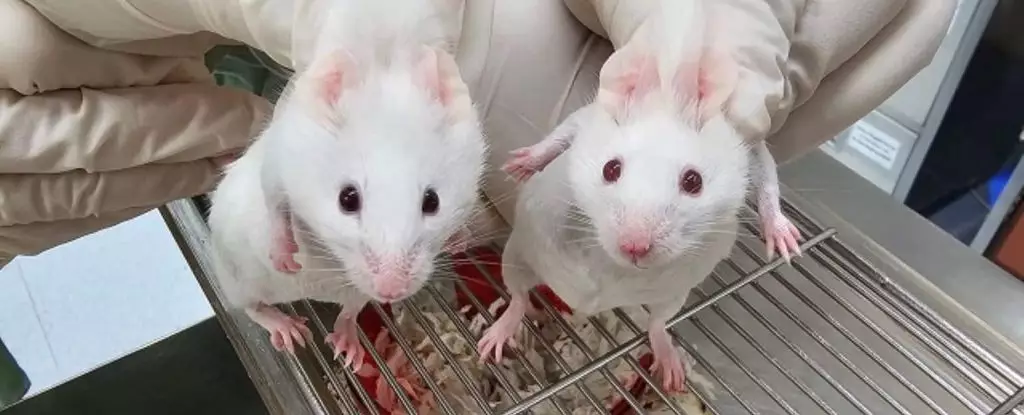The quest to understand the intricate web of life on Earth has led scientists to explore increasingly innovative approaches to genetics and evolution. A recent study involving genetically altered mice in Hong Kong has opened a new avenue of insight into our understanding of pluripotency—the ability of a stem cell to develop into various cell types—and its evolutionary origins. By inserting genetic material from a single-celled organism called a choanoflagellate into mouse embryos, researchers have revealed a remarkable connection between these seemingly disparate life forms, shedding light on how complex multicellular organisms originated from simpler ancestors.
The genetically modified mice are described as exhibiting ordinary characteristics, yet they bear a significant genetic legacy that connects them to ancient unicellular organisms. This experiment’s premise hinges on the idea that genes associated with pluripotency in multicellular animals may have evolutionary roots that trace back to single-celled organisms like choanoflagellates. Found in aquatic environments, choanoflagellates resemble the earliest ancestors of animals and have undergone little evolutionary change since they first appeared.
By incorporating choanoflagellate genes into the genetic makeup of mice, researchers sought to investigate the functionality of these genes and their potential role in the development of pluripotency. According to geneticist Alex de Mendoza, this cross-species experimentation highlights an unexpected continuum of biological function that has persisted across nearly a billion years of evolution. The study suggests that key genes associated with stem cell development may have existed long before multicellular life emerged, implying that the evolutionary narrative of animals may be more complex than previously understood.
Traditionally, pluripotency was believed to have appeared alongside the evolution of multicellular organisms approximately 700 million years ago. However, this groundbreaking research supports the notion that the foundational genes facilitating pluripotency were already present in choanoflagellates, challenging the prevailing paradigm. The findings are bolstered by previous studies indicating the presence of gene families in unicellular organisms that have parallels in multicellular life forms.
The relationship between choanoflagellate Sox genes and mammalian Sox2 genes highlights the subtle interconnections that exist between species. While Sox2 plays a critical role in maintaining pluripotency in mammals, its choanoflagellate counterpart demonstrates biochemical similarities but lacks the ability to promote stem cell formation. This observation posits that the attributes essential for pluripotency may have evolved from simpler gene functions in ancestral species, ultimately allowing multicellular organisms to develop complex structures and systems.
The experimental design, led by researchers from the University of Hong Kong and the Max Planck Institute, involved replacing the mammalian Sox2 gene with its choanoflagellate analogy within cloned mouse stem cells. The altered cells were subsequently introduced into mouse embryos, and the resulting pups exhibited various physical traits indicative of their hybrid ancestry. These results reinforce the idea that, despite the lack of traditional stem cells in choanoflagellates, the genes associated with basic cellular processes were present and may have been co-opted as new biological complexities emerged.
One of the most intriguing aspects of this study is the resilience of choanoflagellate Sox genes, as they succeeded in facilitating stem cell compatibility within the development of mice. This capability prompts further questions about the evolutionary advantages conferred by preserving such genes throughout billions of years of divergence. The research underscores that certain genetic tools may be older than previously theorized, adding depth to the narratives surrounding the origins of multicellularity.
The implications of these findings extend beyond mere curiosity; they could have significant ramifications for the field of regenerative medicine and stem cell therapies. By elucidating the evolutionary origins of pluripotency, scientists may uncover new avenues for enhancing stem cell applications, including advancements in treating degenerative diseases and injuries.
As researchers continue to delve into the genetic intricacies of life’s origins, studies such as this encourage a reevaluation of our understanding of evolution. The main takeaway from this groundbreaking work is not just the fascinating detail of how life has evolved but also the profound interconnections that exist among all living beings, bridging the divide between simple and complex organisms. The echoes of our distant single-celled ancestors resonate still, challenging us to reconsider what we know about the history of life on Earth.


Leave a Reply